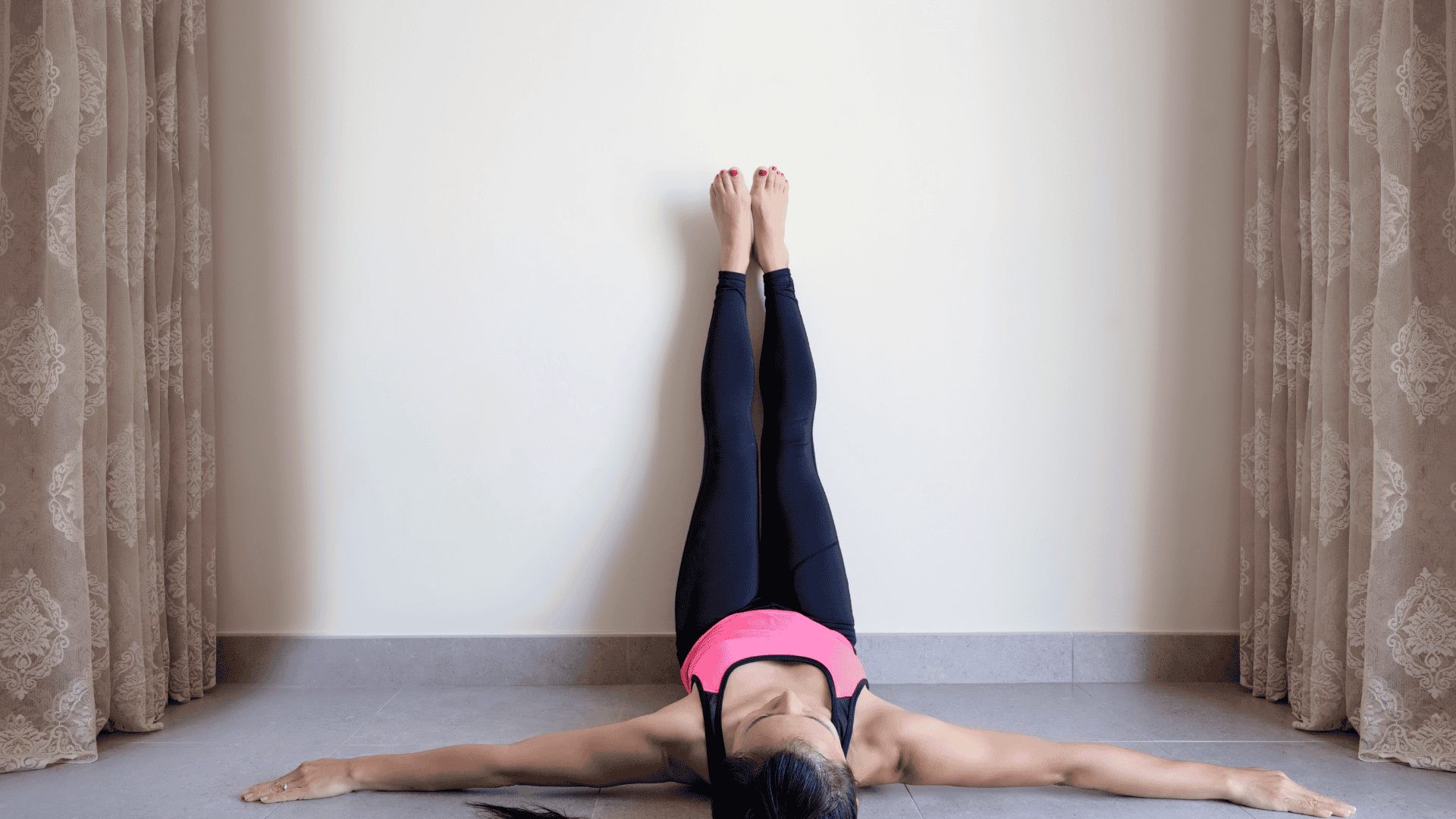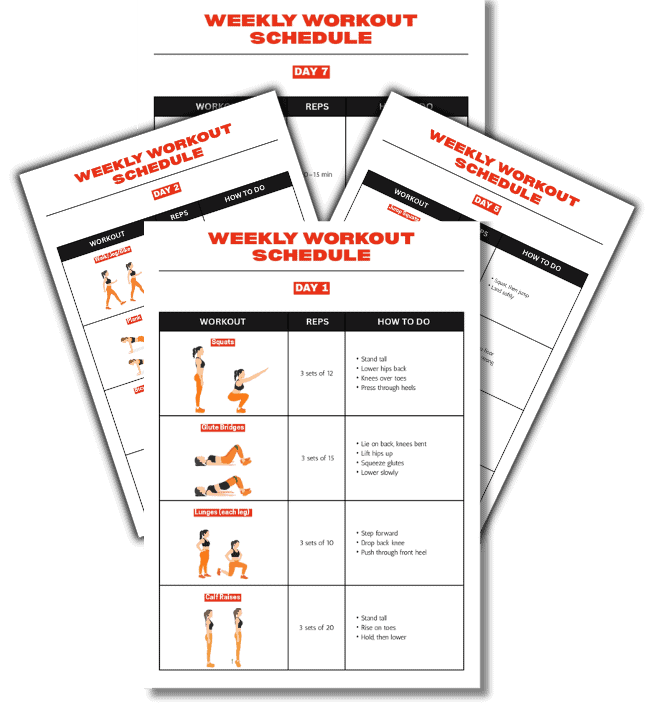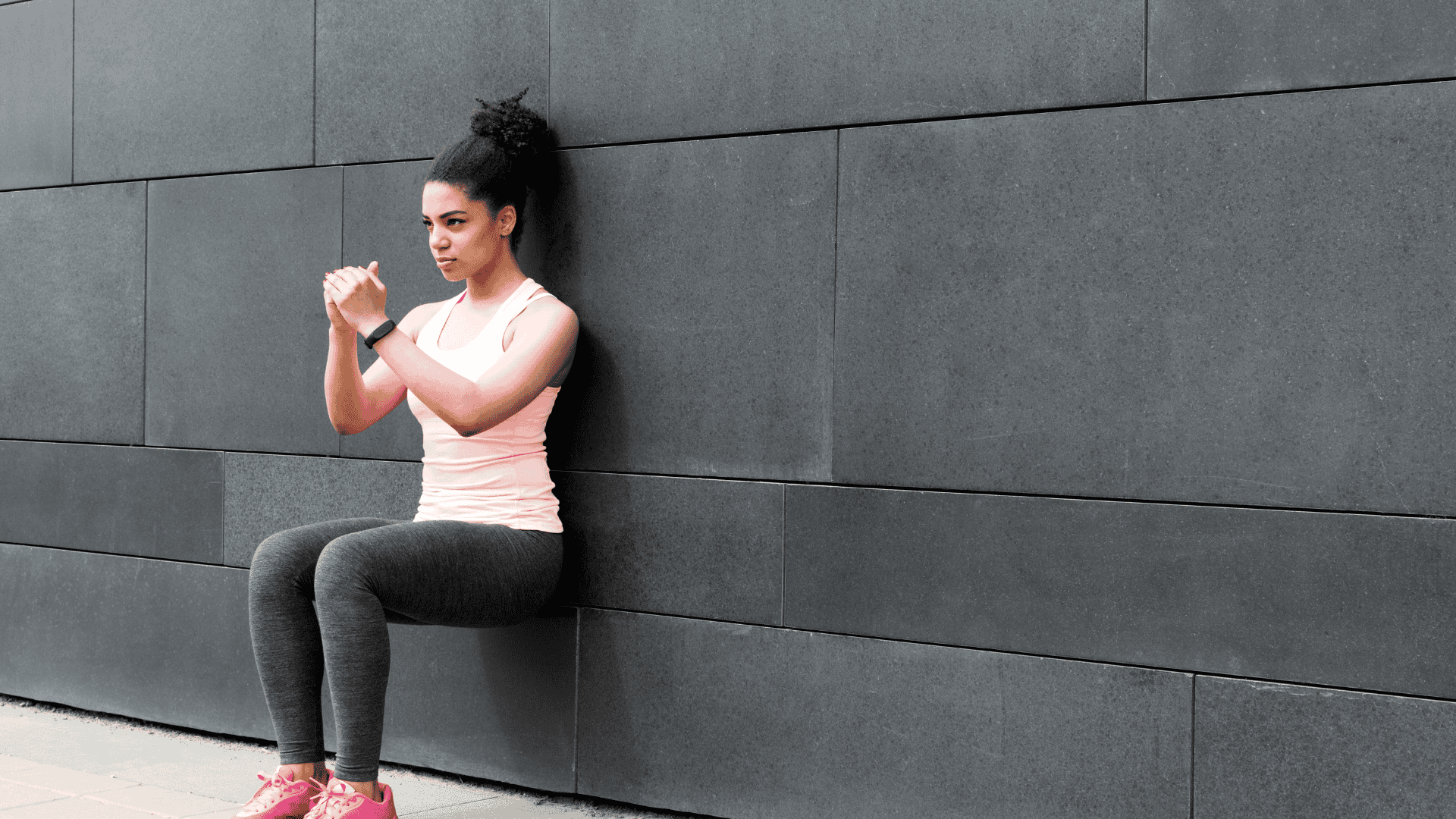Trying something new can feel overwhelming, especially when it looks complicated or totally out of reach. That’s how Pilates can seem at first. But it doesn’t have to be that way.
Wall Pilates is a beginner-friendly option that you can do at home or even anywhere. You won’t need a gym, fancy gear, or even shoes. Just a mat, a little space, and a bare wall.
The wall acts like a built-in support system. It helps you stay steady, keeps your form in check, and takes pressure off your joints.
That’s what makes it great if you’re just starting out, getting back into movement, or need something that’s gentle but still works.
You don’t have to twist yourself into a pretzel or power through complicated moves. This version of Pilates is simple, clear, and easy to follow.
And once you try it, you might be surprised by how strong your body already is.
Let’s break down what wall Pilates is, why it works for beginners, and how you can start your first workout today.
So… What Exactly Is Wall Pilates?
Wall Pilates is a beginner-friendly version of Pilates that uses a wall to help you move, balance, and build strength. You’re not using fancy machines or complicated gear.
Just your body, a mat, and a flat surface to lean on.
The wall makes each move easier to learn because it helps you stay steady and keeps your form in check. That way, you’re less likely to strain your back or knees. You’ll still work your core, legs, and glutes, but with more support and less pressure.
This is why it’s such a great place to start. The pace is slower. There’s no jumping or rushing through the moves. You don’t have to be flexible or strong to begin.
The goal is simply to get moving and build from there.
If lying flat on a mat and trying to follow a complicated workout feels overwhelming, this gives you a much easier way in.
Each move has a built-in guide (the wall) that helps you stay aligned and in control. It’s stable, simple, and a whole lot easier to stick with.
Why Wall Pilates Works So Well for Beginners
Starting a workout routine can be overwhelming. There’s often pressure to do too much too fast. Wall Pilates takes that pressure off.
You only need a small space. Just enough room between your bed and the wall works fine. No gym setup, mirrors, or workout gear required.
The moves are low-impact, which means they’re GENTLE on your knees, hips, and back. That’s helpful if you’ve had joint pain or want something that’s easy on your body.
You won’t need any extra equipment either. Your body weight does the work. The wall helps you focus on your form while building strength at a steady pace.
Wall Pilates helps target your core, legs, and glutes. Over time, it can help improve how you sit, stand, and move through the day. Many people also notice less stiffness and better balance after a few sessions.
For beginners, the best part is that it’s easy to stick with. The movements are simple and clear, and you get stronger by repeating the basics.
That makes it much easier to keep going, even on busy days.
5 Beginner Wall Pilates Exercises You Can Try Today
These moves are perfect if you’re just starting out. You won’t need any gear, and you won’t be rolling around on the floor. Just grab a mat, find a wall, and give these a try.
Take it slow, breathe through each one, and listen to your body. If something feels off, back off.
But if it feels good? Keep going.
1. Wall Roll Down
This is a simple way to stretch your spine and loosen up your back before getting into stronger moves.
Step-by-step:
- Start by standing tall with your back flat against the wall and your feet a few inches out.
- Next, let your arms hang down by your sides.
- Then, begin to slowly roll down, letting your head and shoulders lead, one part of your spine at a time.
- Once your hands reach toward your feet, pause for a moment.
- Finally, roll back up just as slowly, stacking your spine one piece at a time.
What you’ll notice:
You’ll feel a gentle stretch through your back, neck, and hamstrings. It should feel smooth and easy, not rushed or forced.
2. Wall Squat
This move helps strengthen your legs and glutes while teaching you to keep proper alignment.
Step-by-step:
- Begin by standing with your back against the wall and feet shoulder-width apart.
- Then, slowly slide down the wall like you’re sitting in an invisible chair.
- Pause when your knees are bent at about 90 degrees—keep them stacked over your ankles, not pushed forward.
- Hold for 20 to 30 seconds.
- To finish, press through your heels and slide back up.
What you’ll notice:
You’ll feel your thighs and glutes working right away. This move builds strength without needing any extra weight.
3. Wall Push-Up
This is a gentle way to build upper-body strength, especially if regular push-ups feel too tough right now.
Step-by-step:
- Stand facing the wall and place your hands flat at shoulder height, a little wider than your shoulders.
- Then, take a small step back so your body forms a slight diagonal line.
- From here, bend your elbows and lean your chest toward the wall.
- Once you’re close, press back out to the starting position.
What you’ll notice:
This will work your chest, shoulders, and arms. You should feel steady, not strained.
4. Wall Bridge
This move strengthens your glutes, hamstrings, and core, and the wall helps you stay in the right position.
Step-by-step:
- Lie on your back with your knees bent and feet flat on the wall, about hip-width apart.
- Then, press through your feet and lift your hips off the floor until your body forms a straight line from your shoulders to your knees.
- Pause at the top and squeeze your glutes.
- Slowly lower your hips back down.
What you’ll notice:
You’ll feel your backside working with each lift. It also helps open your hips and improve posture.
5. Wall Plank
This is a great core activator that’s easier on your back and wrists than a floor plank.
Step-by-step:
- Start by placing your forearms or palms against the wall at shoulder height.
- Then, walk your feet back a few steps until your body makes a straight line from head to heels.
- Keep your belly pulled in and your shoulders away from your ears.
- Hold for 20 to 30 seconds.
What you’ll notice:
Your core will engage quickly, along with your shoulders and legs. Focus on holding steady without letting your hips sag.
A Quick Wall Pilates Routine You Can Do in 15 Minutes

Once you’ve tried a few basic moves, the next step is putting them together into a simple routine. You don’t need a strict schedule or a bunch of rules. This beginner flow keeps it short, clear, and easy to follow.
Start by choosing 3 to 5 moves from the list you just learned. Do each one for about 30 seconds to 1 minute. Move at your own pace and focus on keeping good form.
If you feel up for it, go through the routine twice. But if one round is enough today, that still counts.
Here’s a sample routine to start with:
- Wall Roll Down – 30 seconds
- Wall Squat – 45 seconds
- Wall Push-Up – 30 seconds
- Wall Bridge – 1 minute
- Wall Plank – 30 seconds
Set a timer so you don’t have to keep checking the clock. You can even play music or a podcast in the background to help you stay focused.
This routine is short, sweet, and actually doable. You can even do it in your pajamas. (Just saying)
What to Expect After One Week of Wall Pilates
After just a few sessions, you’ll probably start noticing some changes, even if they’re small.
You might feel a little more flexible, especially in your back and hips. Things that felt tight on Day 1 may feel easier to move by Day 5.
You might even notice yourself wanting to do the next session, not out of guilt, but because it feels good. When movement feels doable, it’s a lot easier to keep going.
And remember: this isn’t about being perfect. You’re not training for anything. You’re just showing up, doing the work, and getting stronger in ways that matter in real life.
So if by the end of the week you’re feeling even just a little better? That’s your progress. Keep it going.
This Is Your Sign to Try It
You don’t need to be “in shape” to start. That’s the whole point. (this is the start!)
Wall Pilates is easy to try, simple to stick with, and it actually makes your body feel good. You don’t need fancy clothes or a packed gym schedule. Just a wall, a mat, and a few minutes you’re willing to give to yourself.
Even one short session counts. Every time you show up, you’re building strength and making progress, one squat, one bridge, one wall plank at a time.
You might surprise yourself. A week from now, you could feel stronger. Two weeks in, you might move with less stiffness.
And by the end of the month? You’ll feel proud that you actually stuck with something. And honestly, that kind of pride hits different.
So yep, this is your sign. Try it today. Your walls are already waiting.
Stay Consistent Without Overthinking

Wall Pilates feels great when you try it once—but the real results come when you make it part of your weekly routine.
That’s why I created the Free Weekly Workout Schedule. It’s designed for busy beginners who want simple, done-for-you workouts that actually fit into real life.
With this guide, you’ll know exactly when to add wall Pilates and other beginner workouts into your week, so you stay consistent, build strength, and feel progress without stress.
Frequently Asked Questions (FAQ)
1. Is wall Pilates safe for total beginners?
Yes. That’s actually what makes it such a great place to start. The wall supports your body, helps with balance, and keeps you from overdoing it. You can go at your own pace, and most moves can be made easier if needed.
2. How many times a week should I do it?
Start with 2 to 3 times a week if you’re new to working out. If you’re feeling good, you can bump it up to 4 or 5. What matters most is staying consistent, even short sessions add up.
3. Do I need to warm up or stretch before?
You don’t need a long warm-up, but it’s smart to do a few shoulder rolls or light wall stretches before jumping in. Think of it as waking up your muscles before asking them to work.
4. What if I have back or knee pain?
Wall Pilates is low-impact, so it’s easier on joints than other workouts. But if something feels sharp or uncomfortable, skip that move or adjust your position. When in doubt, ask your doctor or a physical therapist first.
5. Do I need a Pilates background to start?
Not at all. You don’t need to know the lingo or have taken a single class. This routine was made for beginners, no experience needed. Just start where you are and build from there.










